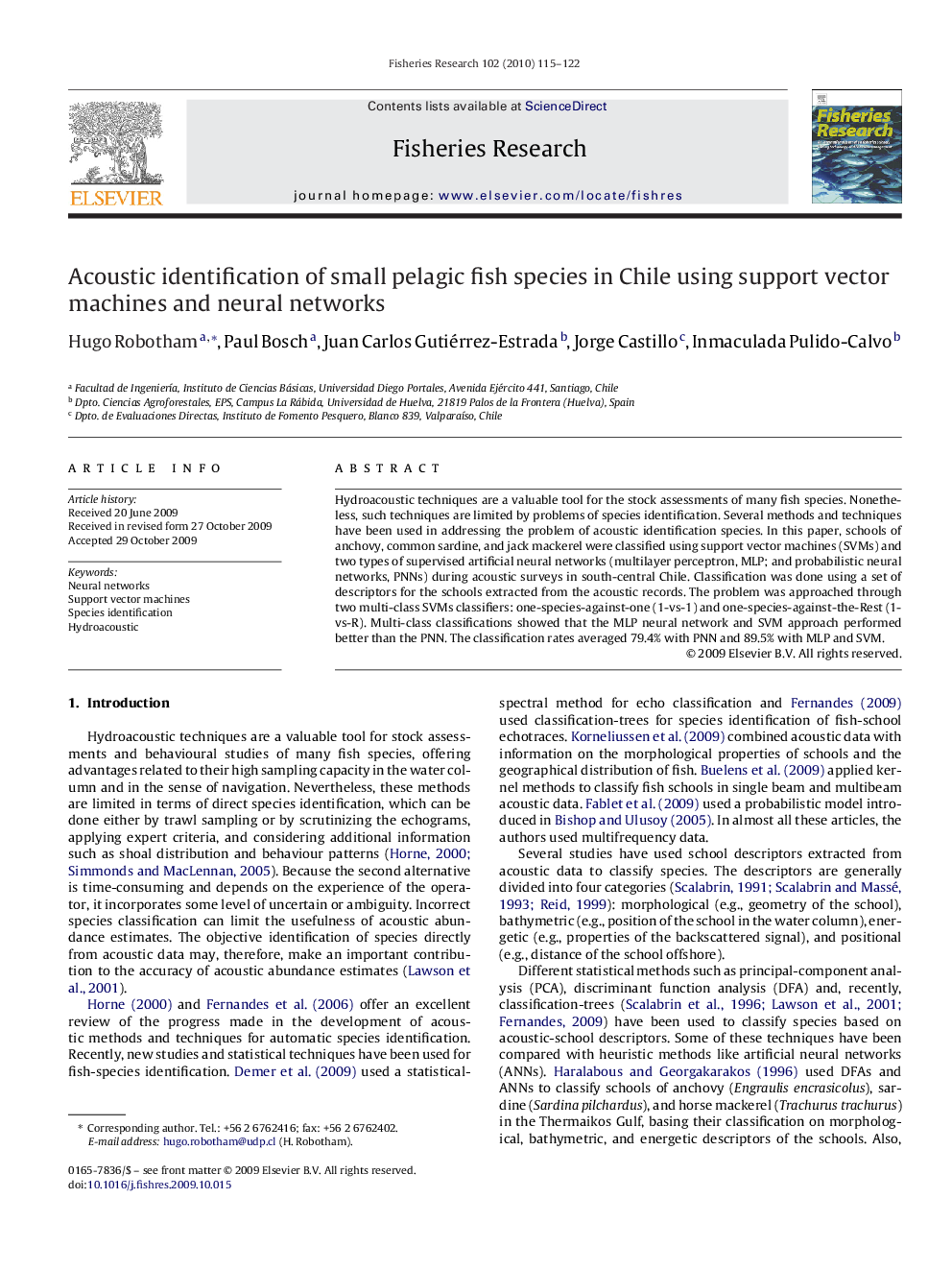| Article ID | Journal | Published Year | Pages | File Type |
|---|---|---|---|---|
| 4543787 | Fisheries Research | 2010 | 8 Pages |
Hydroacoustic techniques are a valuable tool for the stock assessments of many fish species. Nonetheless, such techniques are limited by problems of species identification. Several methods and techniques have been used in addressing the problem of acoustic identification species. In this paper, schools of anchovy, common sardine, and jack mackerel were classified using support vector machines (SVMs) and two types of supervised artificial neural networks (multilayer perceptron, MLP; and probabilistic neural networks, PNNs) during acoustic surveys in south-central Chile. Classification was done using a set of descriptors for the schools extracted from the acoustic records. The problem was approached through two multi-class SVMs classifiers: one-species-against-one (1-vs-1) and one-species-against-the-Rest (1-vs-R). Multi-class classifications showed that the MLP neural network and SVM approach performed better than the PNN. The classification rates averaged 79.4% with PNN and 89.5% with MLP and SVM.
